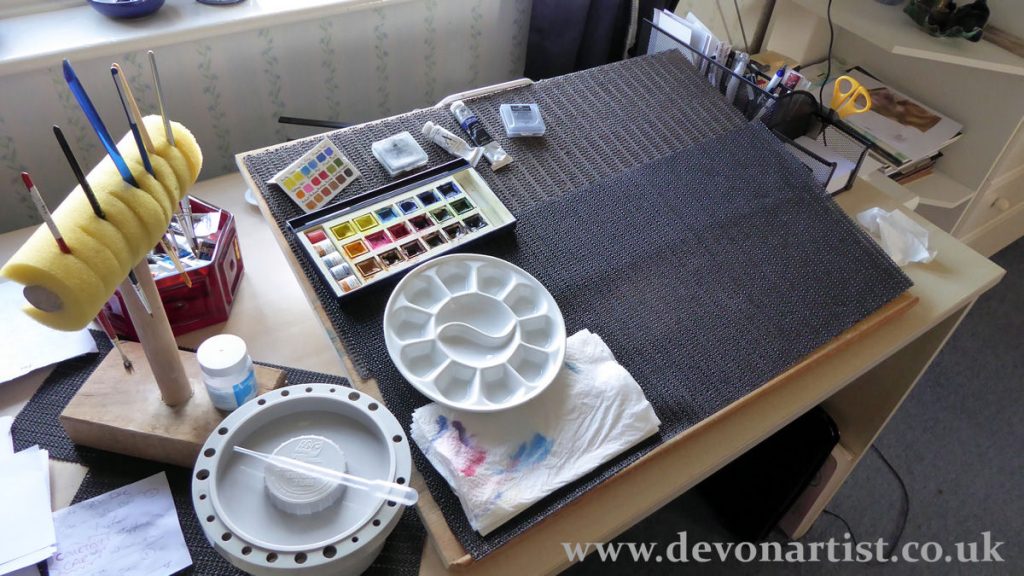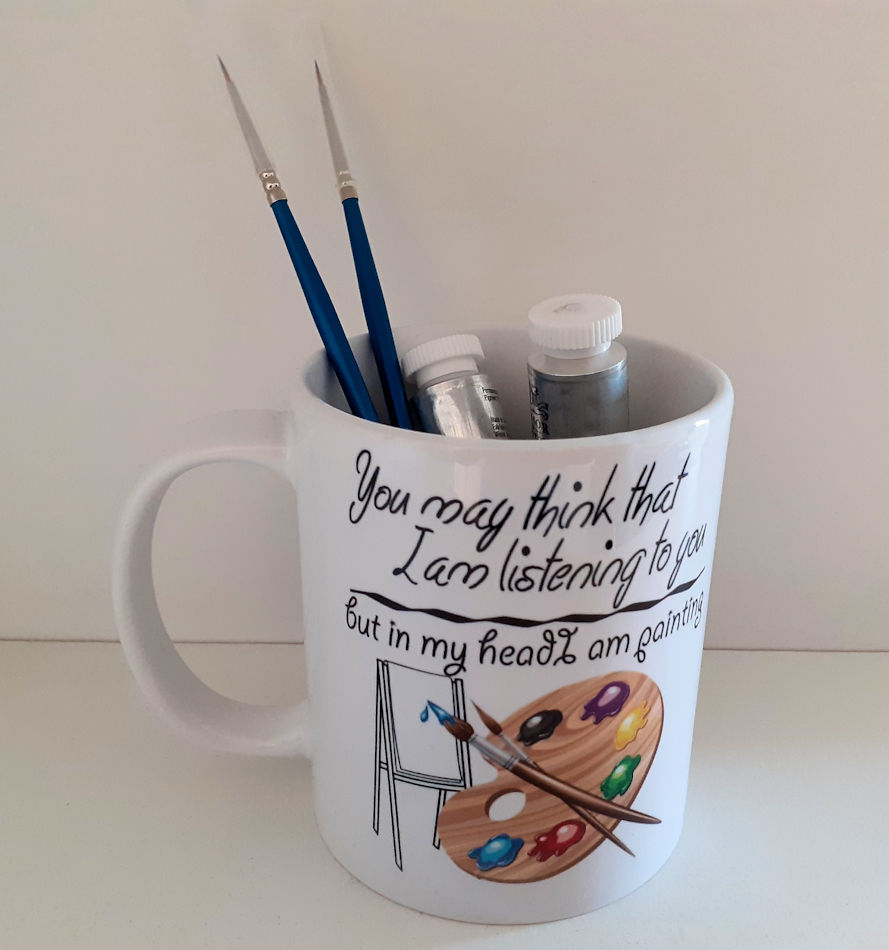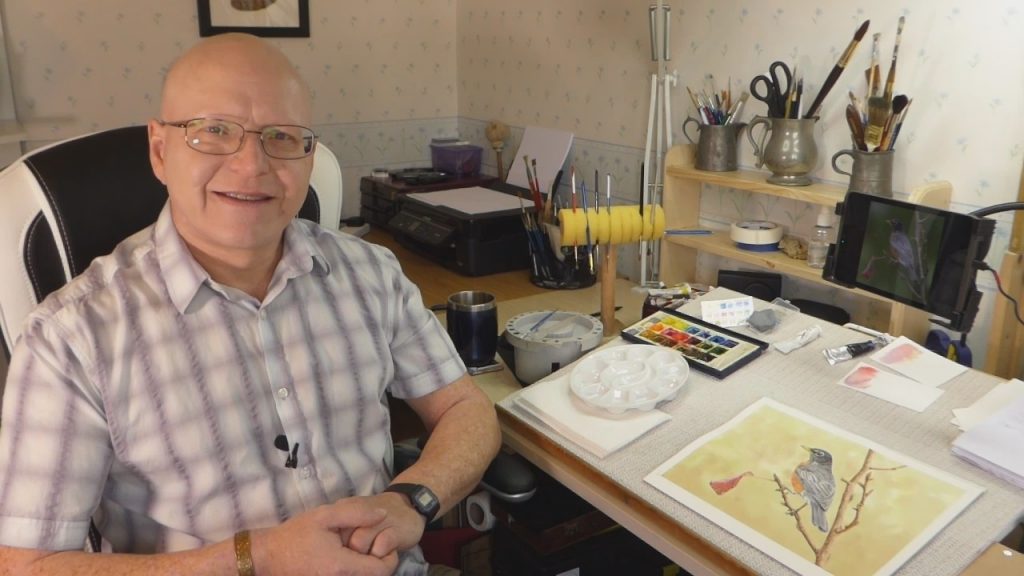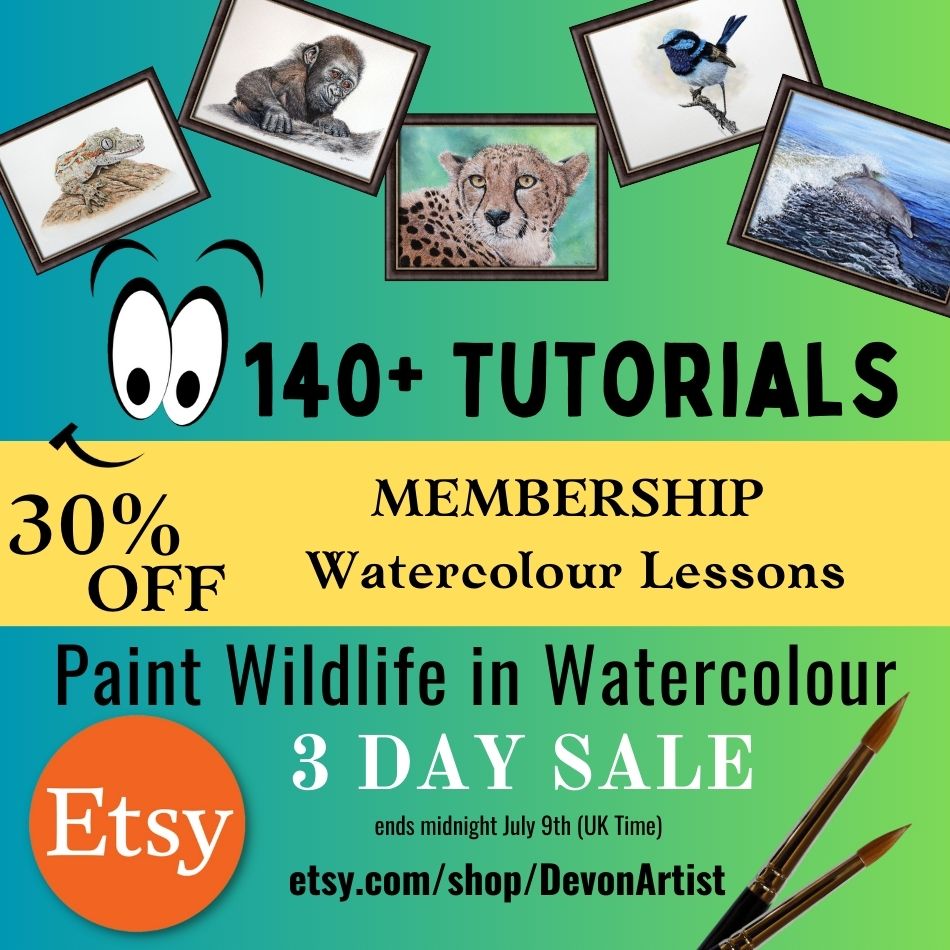How do I get Started with Watercolours?

Are you new to painting and don’t know where to start? Perhaps you want to try a new medium? Or maybe you are interested in learning a new style? Should you have answered yes to any of these questions? Then this may be the post for you….read on and see if it helps. It’s sort of a watercolour painting lesson for beginners. 🤓

A basic watercolour kit
First you will obviously need some equipment. However, until you know whether you are going to like painting detailed watercolour, you may not want to splash out lots and lots of your hard-earned cash! Illustrated above I’ve therefore put together an overview of a basic kit which should get you started.
1. Winsor and Newton Student Cotman Pans
2. Masking Fluid
3. Pipette
4. Lamp black tube paint
5. Old brushes and a ruling pen for applying masking fluid
6. Mechanical pencil
7. Cotman Winsor & Newton Brush Series 111 (Size 00)
8. Rosemary & Co Series 93, size 1
9. Winsor and Newton Size 5 or 6 Acrylic brush for mixing
10. Opaque white tube paint
11. Putty rubber
12. Ceramic palette
This page on my website may help you too: Materials I use
Familiarise yourself with your materials
Moving on, you’ve got your basic kit, and now you would like to start painting. The first thing I would suggest is watching some of my tips and tricks videos on YouTube. You need to become familiar with the watercolour medium. Little projects get you used to mixing your paints and build your confidence. In addition, you will learn how much water to add and will work out which brushes work for you. Why not explore the different ways in which you can use your brushes? Have fun, play with your paints and really get to know them. Find out how your different colours behave – are they opaque, transparent or semi-transparent? What depth of colour can you achieve by layering your paint/glazing? Practice painting thin lines and detailed shapes.
Working on applying washes and painting just an outline and then filling it in, is a really good starter project. These projects will enable you to practice mixing colours, and they also help build your confidence in applying washes. However, you are subsequently challenged to paint a detailed outline with a very small brush. You will find that this really builds your brush control and will be very good preparation for painting future more detailed projects. I have a project on YouTube based on silhouettes and further ones on Patreon too. You can of course easily make up your own versions of these. Most of all have fun and enjoy the process. Make your little projects into cards, bookmarks or little framed pictures. I am sure your friends and family would be pleased to receive them.
Now you are ready for a challenge
When you feel ready to move on to something a little more challenging. I would suggest starting with maybe the robin tutorial. This is a completely free tutorial in the Freebie Club, and is a great watercolour painting lesson for beginners. The video takes you step by step through every stage of painting this little chirpy chappy! You will find that I talk and explain as I paint, so you see every stage, and I also try to avoid jargon. You will learn how to work wet in wet and to apply washes. We will also look at how to layer your paint and achieve fine detail. Then I even take you through painting the wood and using watercolour white.
Alternatively, this lesson is available as a DVD or a download. Or, should you prefer written guides, check out the PDF version of the tutorial instead.

Give yourself time
The most important thing is to make sure you have a good block of time to sit, relax and enjoy the painting process. Preferably you need to be undisturbed for a good hour or two. Indeed, before I went professional a few years ago I used to try and paint for two or three hours a week. It helped me switch off from the normal humdrum of life. I worked on maintenance for many years so a means of relaxing after a physical week was important.

In other words, always take your time and never rush a painting. From time to time, put the kettle on or take a few minutes away from your work. This way you will come back with fresh eyes and spot things which may need adjusting. Sitting close to a painting and working on detail does sometimes prevent you from seeing the full picture. Other than that have fun and ‘smile’, I even sing to myself………….preferably not on camera!
I hope this little watercolour painting lesson for beginners has helped you make a start with this amazing medium. Your next challenge will of course be choosing what to work on next…..well, that is another story altogether.
Paul 




